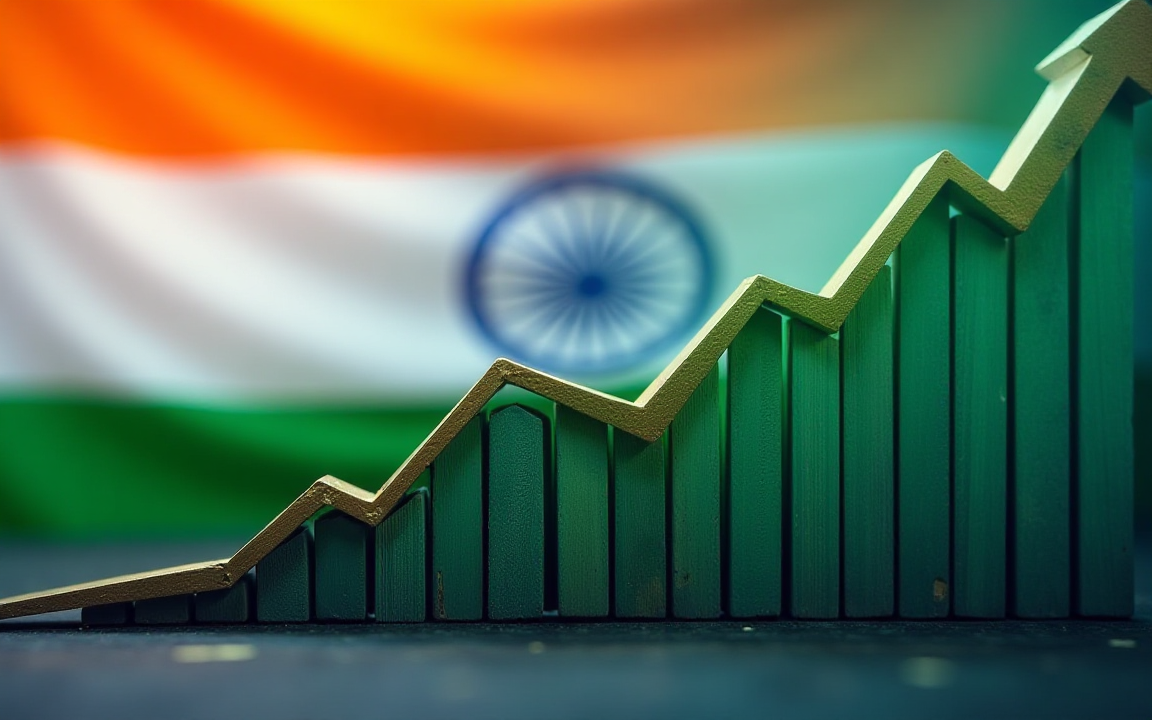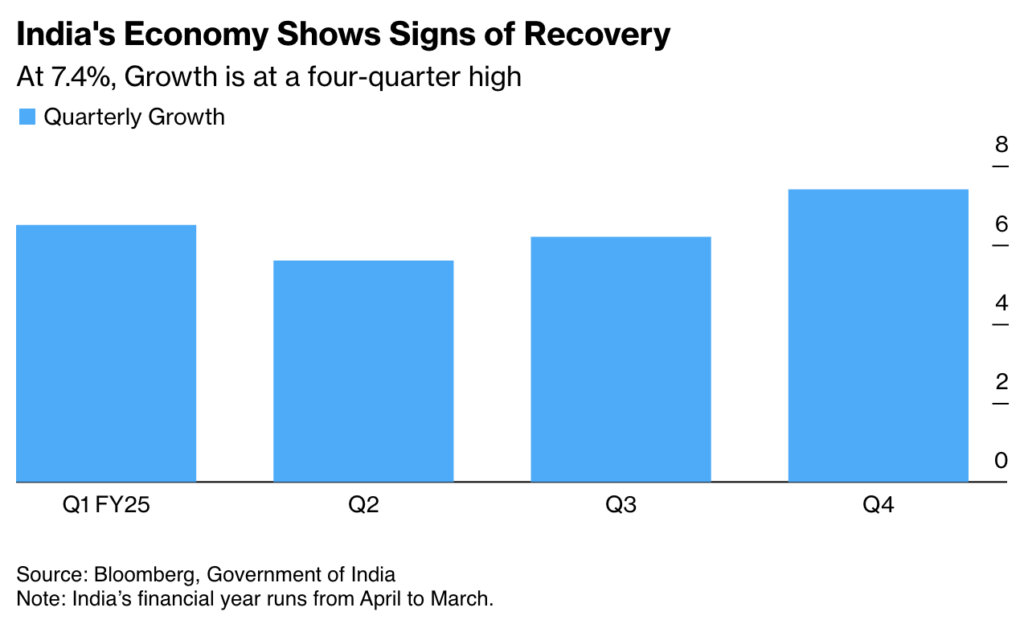
India’s economic growth for the fiscal year 2024-25 decelerated to 6.5%, the slowest pace in four years, as weak private investment and rising global uncertainty weighed on overall momentum, despite a strong finish to the year with GDP growing 7.4% in the March quarter.
Data released by the Ministry of Statistics on Friday showed that the economy expanded faster than anticipated in the final quarter, outperforming the 6.7% median forecast from economists in a Reuters poll.
The March quarter marked the best three-month performance of the year, rising from 6.2% in the preceding quarter.
However, the annual figures showed the economy could not escape the broader slowdown that has emerged since the pandemic-era rebound, and represent a significant deceleration from the 8% average recorded in recent years.
The yield on the 10-year bond rose 2 basis points to 6.27% after the GDP numbers were declared.

Source: Bloomberg
Growth meets projections but risks remain
The 6.5% full-year growth was in line with earlier government estimates, reflecting resilience in domestic consumption and services, even as private investment remained muted.
Economists attributed the subdued investment appetite to geopolitical tensions, Trump-era trade policy shifts, and a fragile security environment in South Asia.
Still, senior Indian officials maintain that India continues to be the fastest-growing major economy in the world, ahead of China and other large peers.
Growth was also buoyed by India’s limited dependence on exports, which shielded it from the full brunt of erratic global trade dynamics, particularly from the US.
Trump tariffs and rate cuts loom over outlook
India’s trade equation with the US came under pressure in recent weeks after President Donald Trump imposed 26% reciprocal tariffs on Indian goods.
While the tariff hike has been temporarily paused for 90 days, a 10% base duty still applies.
India, which runs a $46 billion surplus with the US, is currently negotiating a deal, and Trump has hinted at a possible zero-tariff arrangement.
To support growth, the Reserve Bank of India slashed interest rates for a second straight time in April, bringing the repo rate down to 6%.
Economists expect another cut in June, possibly lowering the rate to 5.5% by the end of the easing cycle.
Inflation remains manageable, giving the central bank room to act.
“Falling inflation, downside risks to growth to prompt another cut to repo rate next week,” said Shilan Shah, deputy chief emerging markets economist at Capital Economics.
Tensions with Pakistan and rural consumption in focus
Domestic headwinds also persist.
A fragile ceasefire in Kashmir threatens to dampen investor sentiment, following military exchanges between India and Pakistan earlier this month.
Analysts warn that renewed tensions could restrain both investment and household spending.
However, rural demand is showing signs of recovery.
According to NielsenIQ, rural areas accounted for nearly 40% of consumer goods sales in the March quarter, signaling a turnaround in countryside consumption which makes up a large part of the economy.
India set to overtake Japan in global GDP rankings
Despite the short-term slowdown, structural optimism remains.
The International Monetary Fund projects that India will surpass Japan in 2025 to become the world’s fourth-largest economy, with a projected GDP of $4.187 trillion.
“India was always going to overtake Japan—and also Germany—given its positive demographics and scope for continued productivity gains,” Shah noted.
Dr. Manoranjan Sharma, Chief Economist at Infomerics Valuations and Ratings, added:
“While external uncertainties—such as supply chain disruptions and energy market volatility—pose challenges, India continues to benefit from strong service sector performance, a stable banking system, and improving manufacturing output under schemes like PLI.”
Even amid volatility, India’s growth story appears intact, underscored by domestic resilience, rising consumption, and strategic positioning in the global economy.
The post India’s Q4 GDP growth hits 7.4%, but FY25 slows to 4-year low of 6.5% appeared first on Invezz

